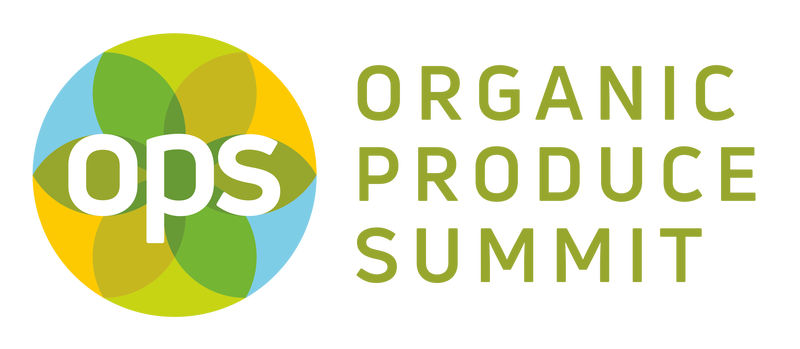Organic Sales Analysis and "Why Behind the Buy" Explored at OPS Ed Session
July 26, 2018

A pair of marketing experts took a deep dive into the trends, attitudes and motivations of the organic consumer and brought their data driven research to one of six educational sessions at the Organic Produce Summit.
The session featured panelists Jordan Rost, vice president of consumer insights for Nielsen; and Melissa Abbott, vice president of culinary insights for The Hartman Group. By the numbers, Rost first took the audience of growers, producers and retailers through the current state of the organic industry, including opportunities for growth and potential pitfalls. He was followed by Abbott who nuanced the motivations behind the buy, and what makes a consumer choose organic.

(L-R) Kevin Coupe, Morning News Beat, Jordan Rost, vice president of consumer insight, Nielsen, Melissa Abbott, vice president, Hartman Retainer Services
The good news, according to Rost, is that consumers are spending more money on products they bring into their homes, but they are changing how they buy. “As more people buy online that is impacting the retail environment. It's been a challenging few years but we are finally seeing some optimism," he said.
The Nielsen executive said the big upside is in fresh perishables, which keep people coming back to produce departments in brick and mortar stores. “Yes, Amazon and online retailing is the future,” he said,” but today every conversation we have is about how do we maximize and leverage growth opportunities with fresh perishables.”

Jordan Rost, vice president of consumer insight, Nielsen
Rost cautioned that the landscape of organic is changing. It’s not just produce anymore as there is significant growth in packaged and frozen foods, as well. “It’s a double-edged sword. More consumers are getting access to these products, but it comes with a delusion of what that value means to shoppers. We used to have conventional and organics and naturals and now we’re seeing a longer tail emerge to different paths to the same idea of cleaner eating,” he said. “There has also been a dramatic power shift from national brands to private label in just a few short years. The rate of change is pretty staggering and we’re seeing it across the landscape.”
So how do growers and producers make sure they stay in front of the trends? Abbott said understanding organic consumers and what motivates them is key. Hartman Group research shows that most organic consumers make buying decisions based on four main things:
What’s in the food, how it’s made, who made it and how it’s grown?
Abbott said there are two distinct consumer groups: the core, or what she calls the evolved consumer; and the peripheral or mainstream customer. The former group is savvy and informed, knows and cares about every detail of organic and continues to push for every greater transparency about everything from biodynamics to regenerative agriculture.

Melissa Abbott, vice president, Hartman Retainer Services
The peripheral or mainstream customer is not as hard core. These consumers are motivated by health and wellness, but also looking for value. While the mainstream group may have greater numbers, Abbott says the core group has tremendous influence.
“What the core consumers are talking about today, mainstream will be talking about soon. With social media, what used to take ten years to evolve as a trend is now taking about two years or less, “she said? Abbott added some of the “core concerns” right now include glyphosate use, water contamination, soil health and biodynamic agriculture. “Glyphosate-free may be the next call out for organics. We see biodynamics as a horizon trend – more of a long slow burn,” she said.
Abbott says there is no question that organics will continue to evolve, and changing demographics and a shift to more urban living will present challenges in the not so distant future. However, she believes as far as consumers are concerned, it’s still all about trust and standards. Communicating that message, as well as individual growers’ stories, offers a connection to the customer that is crucial and personal. Social media, retailer relationships and even new technologies can or will provide the platform.
Rost added that a direct line to the consumer allows growers and retailers to cut through a lot of misinformation that is out there. “With virtual reality or augmented reality, we could put the farmer in the grocery aisle with the shopper and tell the story directly. That maybe a few years out but it could be the future,“ he said.

